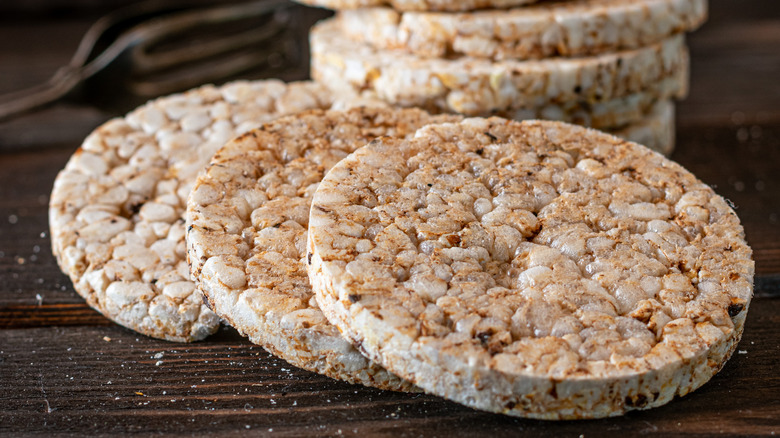In the vast realm of snacks, rice crackers hold a unique position. These crunchy delights have traversed centuries of culinary evolution, originating from ancient Asian cultures to becoming a global favorite. With their crispy texture, versatile flavors, and healthier profile compared to many traditional snacks, rice crackers have garnered widespread admiration. This article delves deep into the origins, production methods, nutritional aspects, and diverse flavors of rice crackers, exploring why they have become a beloved snack worldwide.
Origins and Historical Significance
The Ancient Beginnings: Rice crackers trace their roots back to ancient Asia, particularly Japan and China. Records indicate that these snacks have been enjoyed for centuries, with evidence of their existence dating back to the Edo period in Japan and the Tang dynasty in China.
Traditional Methods: Initially, rice crackers were handmade using simple ingredients such as rice, water, and salt. They were often prepared as a way to preserve rice and make it more portable for travelers and warriors.
Cultural Significance: In many Asian cultures, rice holds profound cultural and symbolic importance. As an extension of this, rice crackers became more than just a snack; they became intertwined with rituals, celebrations, and everyday life.
Production Process: From Rice Grain to Crispy Snack
Rice Selection: The quality of rice is crucial in determining the taste and texture of rice crackers. Varieties such as glutinous rice or japonica rice are commonly used due to their sticky nature, which helps bind the ingredients together.
Milling and Washing: The rice grains undergo milling to remove the outer husk, followed by washing to eliminate impurities.
Steaming: Steaming the rice is a critical step that softens the grains and prepares them for the next stage of processing.
Molding and Shaping: The steamed rice is molded into various shapes, ranging from round discs to elongated strips, depending on the desired final product.
Drying: The shaped rice cakes are then dried thoroughly to remove excess moisture, a process that contributes to their crispy texture.
Seasoning: After drying, the rice crackers may be seasoned with a wide array of flavors, including soy sauce, seaweed, chili, sesame, or wasabi, among others.
Baking or Frying: The seasoned rice crackers are either baked or fried until they achieve the perfect crispiness.
Nutritional Profile and Health Benefits
Low in Fat: Rice crackers are typically low in fat, making them a healthier alternative to many fried snacks. However, the fat content may vary depending on the method of preparation.
Gluten-Free: As rice is naturally gluten-free, rice crackers are suitable for individuals with gluten sensitivities or celiac disease.
Source of Carbohydrates: Rice crackers provide a quick source of carbohydrates, making them a convenient energy-boosting snack.
Minimal Additives: Compared to some packaged snacks that contain artificial flavors and preservatives, rice crackers often have minimal additives, especially if homemade or produced by reputable brands.
Exploring Flavor Varieties
Classic Soy Sauce: The traditional soy sauce flavor offers a perfect balance of savory and salty notes, appealing to those who prefer a classic taste.
Seaweed Infusion: Seaweed-seasoned rice crackers provide a unique umami flavor profile, with hints of oceanic freshness.
Spicy Wasabi: For those who crave a kick of heat, wasabi-flavored rice crackers deliver a fiery punch that tantalizes the taste buds.
Sesame Sensation: Sesame-coated rice crackers boast a nutty flavor and crunchy texture, adding an extra dimension of taste.
Sweet Options: While savory flavors dominate the rice cracker market, there are also sweet varieties available, often featuring ingredients like honey or brown sugar for a delightful indulgence.
Culinary Uses and Pairings
Snacking: The most common way to enjoy rice crackers is straight out of the bag as a standalone snack, perfect for munching on-the-go or during movie nights at home.
Charcuterie Boards: Rice cracker’s make an excellent addition to charcuterie boards, offering a crunchy contrast to creamy cheeses, salty cured meats, and tangy pickles.
Dipping: Pair rice crackers with dips such as hummus, guacamole, or spicy salsa for a satisfying snack or appetizer.
Salad Toppings: Crushed rice cracker’s can be used as a crunchy topping for salads, adding texture and flavor to leafy greens and vegetables.
Stir-Fries: Incorporate crushed rice cracker’s into stir-fries for added crunch and a subtle rice flavor that complements Asian-inspired dishes.
Global Popularity and Market Trends
Asian Influence: While rice cracker’s have their origins in Asia, their popularity has transcended geographical boundaries, gaining a devoted following in Western countries and beyond.
Health-Conscious Consumers: As consumers become more health-conscious, there is a growing demand for snacks that offer nutritional benefits without compromising on taste, positioning rice cracker’s as a favorable choice.
Innovative Flavors: To cater to diverse palates and culinary preferences, manufacturers continue to innovate by introducing new and exciting flavor combinations, such as teriyaki, barbecue, and spicy sriracha.
Sustainable Packaging: With increasing awareness of environmental issues, there is a shift towards eco-friendly packaging options for rice cracker’s, including compostable bags and recyclable materials.
Conclusion
In a world inundated with snack options, rice crackers stand out for their simplicity, crunchiness, and versatility. From their humble beginnings in ancient Asia to their current status as a global snack phenomenon, rice cracker’s have retained their allure through the ages. Whether enjoyed as a guilt-free indulgence, a flavorful accompaniment to meals, or a creative ingredient in culinary creations, rice cracker’s continue to captivate taste buds and inspire snack lovers worldwide. So, the next time you crave a satisfying crunch, reach for a pack of rice cracker’s and embark on a delightful culinary journey.







